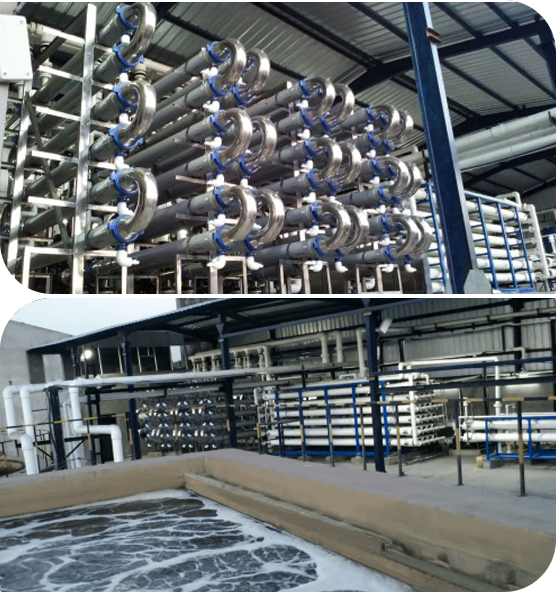
Waterman Engineers Australia is among the primary manufacturers of Zero Liquid Discharge method. A ZLD method is actually a treatment method course of action and that is made use of to eliminate each of the liquid squander from the process. The objective of ZLD water treatment is to lower wastewater economically and deliver potable drinking water that is certainly suit for typical use. Zero discharge method is a complicated treatment method approach that comprises ultrafiltration, reverse osmosis, evaporation and fractional electro deionization. And we are a perfectly-regarded supplier of ZLD units.
In lots of Industries, like ability, oil & gasoline, chemicals, mining and Some others, a great deal of wastewater is generated that needs to be managed. Conventionally, this discharge of wastewater is done by means of a plant outfall to some area water overall body like an evaporation pond, or in some cases deep very well injected. These methods bring on numerous environmental problems by the public in many areas of the world, as water is often a scarce resource and its management must be monitored. These fears have resulted within the establishment of ZLD procedures by lots of industries to lessen their environmental footprint and improve sustainability. And, Waterman Engineers Australia are ideal ZLD suppliers you can find for this system.
Homes OF ZERO LIQUID DISCHARGE Process
The Attributes of the Zero Liquid Discharge system can vary dependant upon the specific style and engineering utilised. On the other hand, some prevalent Attributes of ZLD units involve:
H2o Conservation: Among the main objectives of ZLD methods would be to preserve drinking water by minimizing the discharge of liquid squander to the surroundings.
Large Water Purity: ZLD units are meant to develop substantial-top quality water that may be free of charge from impurities and contaminants, which makes them suitable for use in several industrial procedures.
Versatility: ZLD systems are sometimes created to support a broad number of input liquid streams, that makes them versatile and well suited for use in numerous industries.
Highly developed Wastewater Therapy: Zero liquid discharge devices use advanced wastewater treatment techniques to remove impurities and contaminants within the effluent, creating high-top quality h2o.
Waste Reduction: ZLD systems aid cut down squander by lessening the amount of liquid waste that needs to be disposed of and by generating a concentrated, strong waste substance that may be safely disposed of.
Power Efficiency: ZLD programs could be Electrical power-intensive due to the superior Power needs of evaporation and various wastewater therapy procedures. Nevertheless, developments in know-how are earning Zero liquid discharge methods a lot more Electrical power-efficient and cost-effective.
Waterman Engineers Australia manufactures Zero Liquid Discharge (ZLD) systems designed to remove all liquid squander, aiming to make potable drinking water and lessen environmental affect. Their ZLD techniques usually consist of ultrafiltration, reverse osmosis, evaporation, and fractional Zld System Manufacturer Zero Liquid Discharge System electro deionization. Key systems utilised are Falling Movie Brine Concentrators, Pressured Circulation Crystallizer, and Other people, with a two-move strategy of pre-concentration and evaporation/crystallization to Get well and reuse water. These units are adaptable to unique industries, emphasizing water conservation, superior drinking water purity, squander reduction, and Strength efficiency. Complex specifications are various and customizable, taking into consideration elements like drinking water source, circulation price, and feed drinking water quality.
The need for Zero Liquid Discharge (ZLD) units arises with the necessity to handle environmental fears linked to h2o scarcity and air pollution. In industries like electrical power, oil & fuel, and mining, vast amounts of wastewater are produced. Customarily, this wastewater is discharged into bodies of water, triggering air pollution and depleting clean water assets. ZLD devices purpose to minimize these impacts by treating and recycling wastewater in the economic system, thereby conserving water, lowering waste, and selling sustainability.
When thinking about the technological specifications of the Zero Liquid Discharge (ZLD) system, essential facets to target include things like the h2o supply it is going to deal with, the method's flow amount, the standard of feed drinking water, the phases of remedy associated, the Restoration fee of drinking water, strategies for concentrate disposal, materials of design, running ailments, and technique automation and Handle. These aspects make sure the technique's usefulness, durability, and performance in dealing with and recycling industrial wastewater.
Zero Liquid Discharge (ZLD) plants give Positive aspects including water conservation, squander reduction, and pollution avoidance, contributing to environmental sustainability. They're relevant in industries like electrical power technology, oil and gasoline, chemicals, and mining, wherever they help in running industrial wastewater properly, decreasing the ecological footprint, and complying with rigorous environmental laws. These units are critical in areas experiencing water scarcity and for industries aiming to enhance their sustainability and operational performance.
FAQs for any Zero Liquid Discharge (ZLD) procedure frequently tackle its operational principles, Expense-success, maintenance demands, environmental impact, applicability across a variety of industries, and regulatory compliance. These thoughts aid people understand the program's Added benefits, technological demands, and suitability for their certain wastewater management demands.
one. Zero Liquid Discharge (ZLD) is usually a wastewater treatment method intended to do away with all liquid squander.
two. The process's parts are affected by the particular industrial course of action, wastewater composition, and regulatory prerequisites.
three. Effluent procedure crops get rid of pollutants from textile effluents to circumvent environmental contamination.
four. Rewards involve water conservation, pollution reduction, and regulatory compliance.
5. The purpose is to reduce environmental impression by recycling h2o and decreasing squander.
6-nine. Effluent treatment plants are levels in wastewater procedure: Main (physical separation), secondary (biological treatment), and tertiary (Sophisticated therapy).
ten. Unit functions consist of filtration, sedimentation, Organic treatment method, and disinfection.
11. Restricting parameters are variables that have an effect on the therapy's performance, like pH and contaminant concentration.
twelve. Design and style concerns include stream charge, effluent composition, and desired excellent of handled h2o.